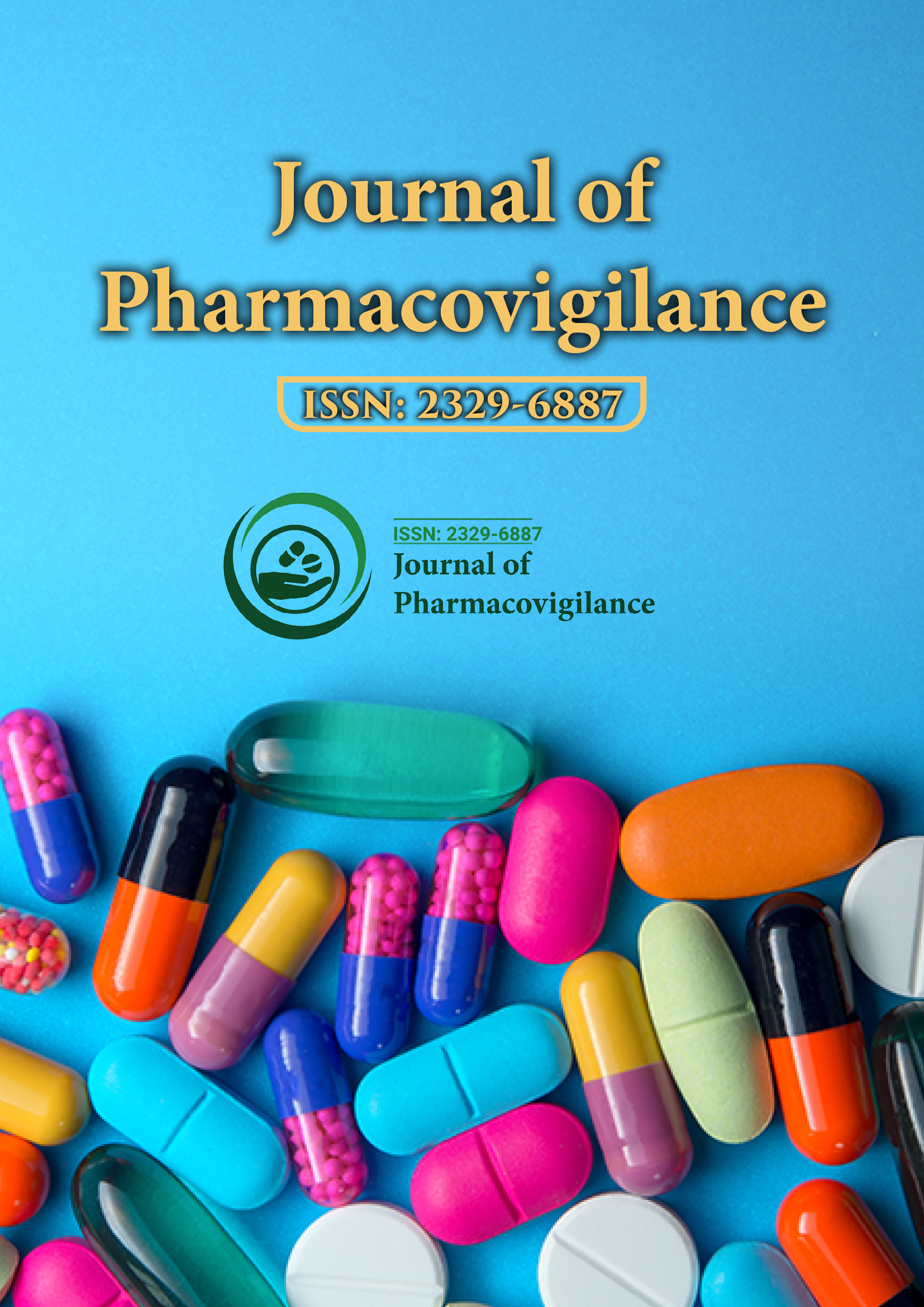Indexed In
- Open J Gate
- JournalTOCs
- The Global Impact Factor (GIF)
- RefSeek
- Hamdard University
- EBSCO A-Z
- OCLC- WorldCat
- Publons
- Euro Pub
- Google Scholar
Useful Links
Share This Page
Journal Flyer

Open Access Journals
- Agri and Aquaculture
- Biochemistry
- Bioinformatics & Systems Biology
- Business & Management
- Chemistry
- Clinical Sciences
- Engineering
- Food & Nutrition
- General Science
- Genetics & Molecular Biology
- Immunology & Microbiology
- Medical Sciences
- Neuroscience & Psychology
- Nursing & Health Care
- Pharmaceutical Sciences
Opinion Article - (2025) Volume 13, Issue 2
Post-Marketing Drug Surveillance: A Pillar of Medication Safety
Ethan Harper*Received: 26-May-2025, Manuscript No. JP-25-29713; Editor assigned: 28-May-2025, Pre QC No. JP-25-29713; Reviewed: 11-Jun-2025, QC No. JP-25-29713; Revised: 18-Jun-2025, Manuscript No. JP-25-29713; Published: 25-Jun-2025, DOI: 10.35248/2329-6887.25.13.515
Description
Monitoring the safety of pharmaceutical products after they are introduced to the general population is a vital function within healthcare systems dedicated to protecting public health. While clinical trials play a crucial role in determining a drug’s efficacy and identifying common side effects, they are inherently limited in scope. Trials are conducted in controlled environments and typically involve a relatively small, specific group of participants. As a result, they may not fully reveal the broader spectrum of risks that could emerge once a drug is used by diverse populations in real-world conditions.
Once a medication enters the market, a wider range of individuals including those with varying medical histories, genetic backgrounds, and concurrent treatments begin to use it. This broader exposure can lead to the discovery of previously unknown adverse effects or safety issues. To manage these potential risks, a robust and continuous surveillance system, commonly known as post-marketing surveillance or pharmacovigilance, is essential.
The effectiveness of this surveillance system depends on the collection and analysis of detailed reports on Adverse Drug Reactions (ADRs). These reports can come from a variety of sources: healthcare professionals, patients, caregivers, and pharmaceutical companies. Each report provides valuable insight into how a drug behaves in a real-world setting, and collectively, they form a critical database for identifying trends, patterns, or unusual events that may indicate a safety concern.
Early detection of safety signals is crucial. By identifying potential problems promptly, regulatory bodies and healthcare providers can take appropriate actions such as updating prescribing guidelines, issuing safety warnings, or even withdrawing a product from the market to minimize harm to patients. This dynamic process allows drug safety profiles to evolve and improve over time, enhancing patient care and trust in medications.
Encouraging active and consistent reporting is key to the success of post-marketing surveillance. Healthcare professionals play a pivotal role, and their awareness of the importance of reporting must be continually reinforced through education and training programs. These initiatives help clinicians recognize adverse effects more effectively and ensure that they document and submit relevant information in a timely manner. Patients also contribute significantly to this system. By being informed about potential side effects and empowered to report their experiences, patients can serve as an early warning system for unexpected outcomes. Open communication between patients and healthcare providers fosters a culture of transparency and safety.
In recent years, simplifying the process of reporting adverse reactions through digital portals, mobile applications, and user-friendly interfaces has made it easier for both professionals and the public to participate.
Technological innovation has further enhanced the capabilities of pharmacovigilance. Advanced data analytics tools now allow large volumes of safety data to be processed quickly and accurately. Machine learning and artificial intelligence can detect subtle patterns and correlations that may not be obvious through manual review. Integrating adverse event data with electronic health records adds context and depth, enabling a more comprehensive understanding of the circumstances surrounding adverse effects.
International collaboration has also become increasingly important. Regulatory agencies around the world share safety information through global networks, allowing for faster identification of risks that may have transnational implications. This cooperative approach helps prevent duplication of effort and ensures that safety measures can be implemented more uniformly across different healthcare systems. To overcome these obstacles, ongoing efforts are needed to standardize reporting processes, improve data quality, and invest in the training of professionals who analyze the information. Establishing clear guidelines and promoting accountability among all stakeholders helps strengthen the overall system.
Conclusion
Post-marketing drug surveillance is a fundamental component of a safe and effective healthcare system. It enables the detection and management of risks that may not be apparent during preapproval testing. By leveraging education, technology, and international cooperation, healthcare systems can ensure that medications remain as safe as possible throughout their lifecycle, ultimately improving patient outcomes and confidence in modern therapeutics. Transparency and open dialogue between regulatory agencies, healthcare providers, pharmaceutical companies, and the public are essential to building trust and ensuring that patient safety remains a top priority.
Citation: Harper E (2025). Post-Marketing Drug Surveillance: A Pillar of Medication Safety. J Pharmacovigil. 13: 515.
Copyright: © 2025 Harper E. This is an open-access article distributed under the terms of the Creative Commons Attribution License, which permits unrestricted use, distribution and reproduction in any medium, provided the original author and source are credited

